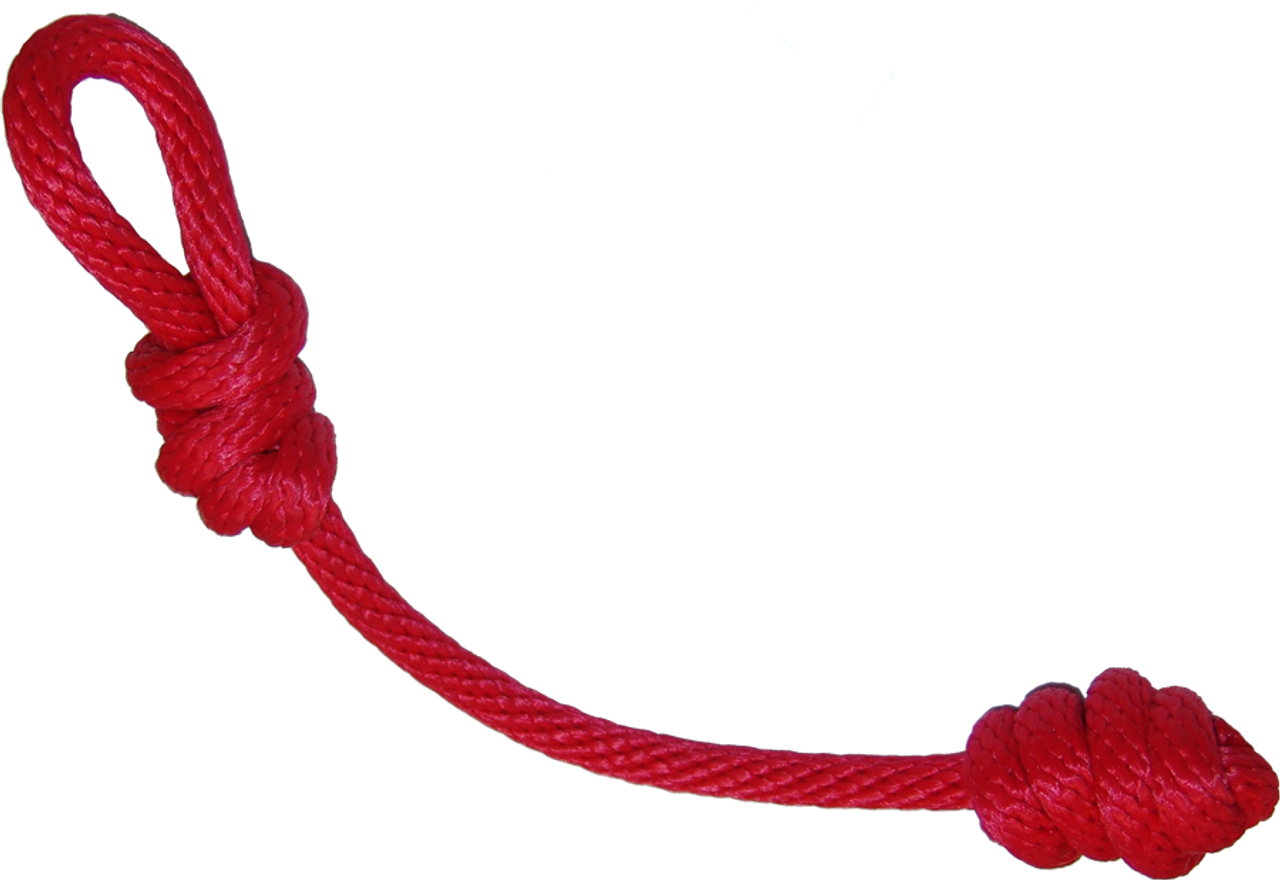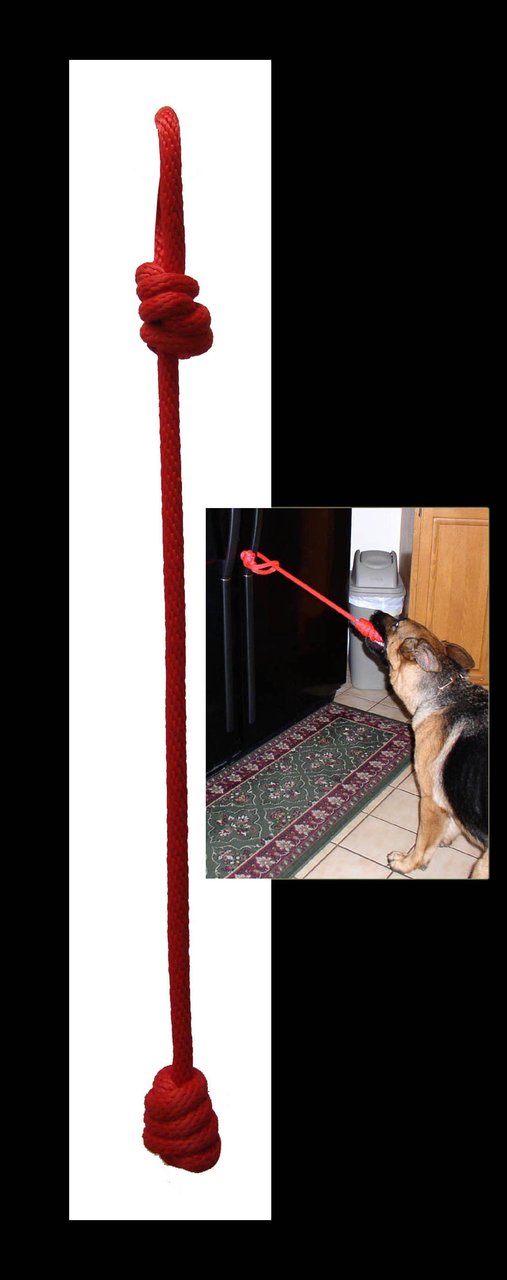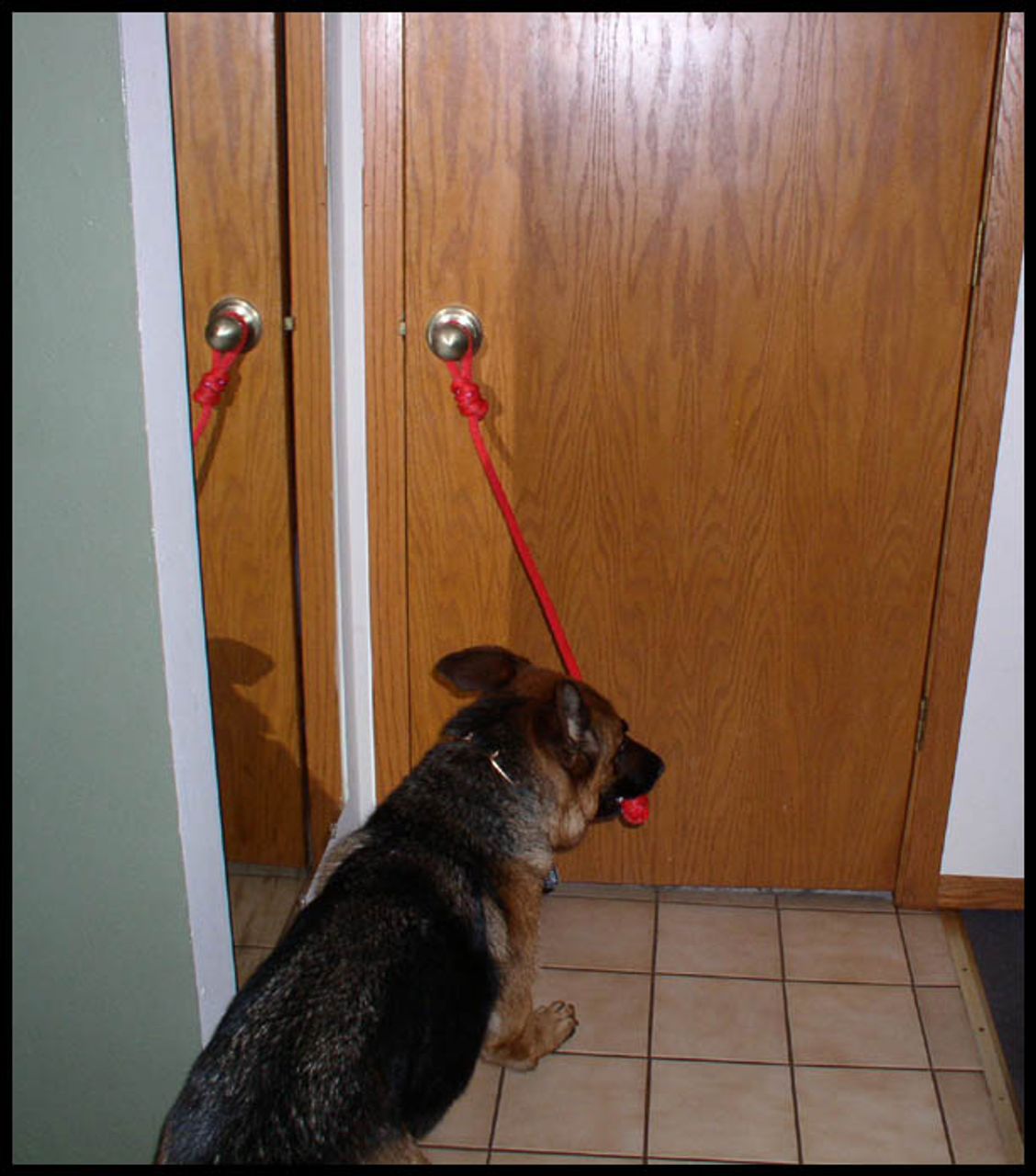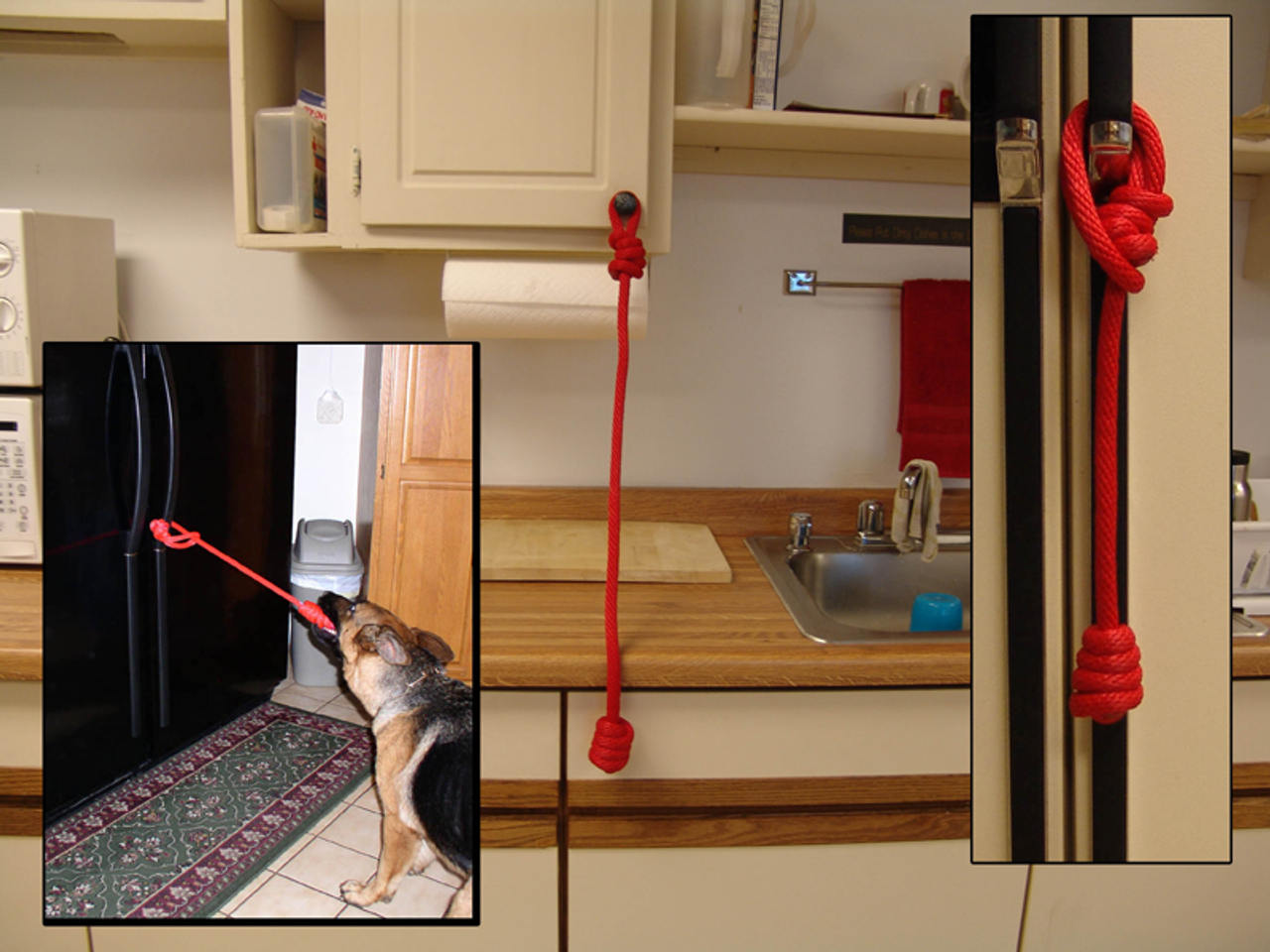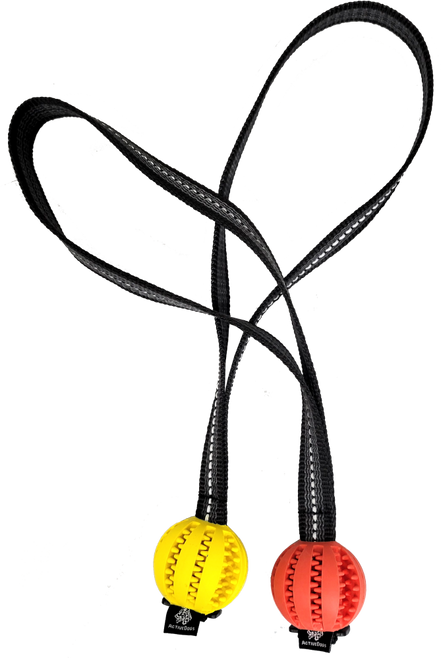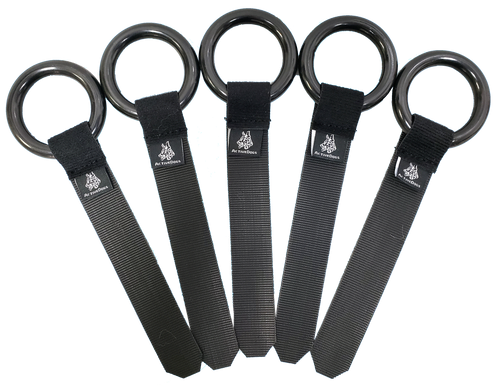Our OPEN COMMAND Training Rope is ideal for training your dog the open command. Every dog trains differently and is motivated differently. I have found that this Open Command Training Rope works well with giving a dog clarity to what you want them to do. The dog sees and learns to understand that no matter where you are or where you have placed the Open Command Training Rope, it signifies to the dog that on command he/she is to pull open that object where rope is attached. I have used this rope tool since 2004 and have found it very useful because it can adjust to any size and easily attaches to a wide variety of objects. I still have and use my original one. Some of the objects that I have used this OPEN COMMAND Training Rope to train dogs to open doors, cupboards, refrigerator, clothes dryer and more.
How it works is one end has a slip knot and the other a wrapped knot. You simply open the slip knot end and loop that end of the rope around or through the knob or handle of what you are training the dog to open. The OPEN COMMAND Training Rope is a bright thick easy to grab soft rope that will not damage your dogs teeth. It can easily roll up and fit in your bag. It is a simple but very useful training tool.
This is how I train a dog to open a an object like a door, cupboard, refrigerator, etc. I have the dog in the room to see that I am attaching the OPEN COMMAND Training Rope to the object. I have treats concealed in my left hand, I touch the knot end of the rope and then I tell the dog OPEN. Do not over talk to the dog, it will only cause confusion. Stay calm and firm and consistently touch or pat the knot end saying OPEN. At first the dog has no idea what you want. As soon as the dog puts its mouth on the knot I mark the behavior and immediately slip my left hand under the dogs nose and give him/her the reward. I have had a dog that learned to open doors with only five taps on the knot. He was trained with praise not food but I will tell you that is not usual and most dogs do not learn that quickly. A dog that is used to learning will learn new tasks faster than a dog that is just starting training.
Once the dog successfully learns that putting the knot in its mouth gives him/her a reward they will associate that the word OPEN means getting a reward. Now if you have a dog that does not want to put the rope knot in its mouth you can open the dogs mouth, place the knot in the dogs mouth, give the command "OPEN" and then quickly replace the knot with the treat or reward you have chosen. I train in what I call building blocks, if the dog already knows the "brings" command this "Open" command training will be easier and faster to learn.
(If you want to know how to train for the "brings" command see the article in the product Retrieve Training Mesh Bag).
The next step in the Open Command training is to get the dog to pull the rope back to you, causing the door to open. Once you have taught the dog that when you say OPEN it goes over and grabs the rope knot end then you will ask the dog to bring it to you. You can also call the dog over to you. The dog must keep the rope in its mouth. Do not reward unless the dog keeps the rope knot in its mouth. A little tip is to be prepared to see where the door will swing. If the dog grabs and door and it swings to fast hitting the dog it will make the dog leery of pulling the door open. Eventually the dog will learn how much pressure to pull on the rope. Until then I generally just put my foot or elbow in front of the door about 12 inches away from where the door will swing back to block just in case the dog flings the door open to fast. You can increase the distance between you and the door as the training continues. Once the dog independently goes to the rope on the OPEN command and pulls the door open you can drop the "brings" command and use just the OPEN command for this task. You can then move unto another object to open placing the OPEN COMMAND Training Rope on it. After the dog clearly understands what I want I may place and leave the ropes on different objects or doors in the room. Eventually pointing to which door I want open. This is a process and the secret is consistency, patients, don't try to learn to much too fast, don't frustrate or confuse the dog. I try to always end each training session on a positive note because next time the dog will be more willing to learn and want to please me.
Made in the USA by Activedogs.com
- Category:
- Assistance Equipment
- Type:
- Task Trainer
- Product Line:
- AD







